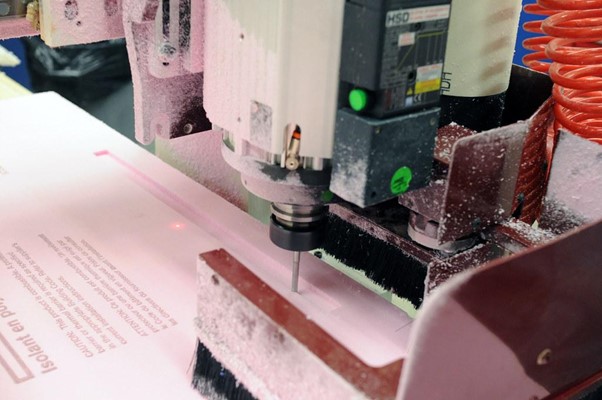How to Maintain Your CNC Machine for Optimal Performance
CNC machines are critical components of modern manufacturing processes. These machines are highly automated and precise, making them ideal for accurately and efficiently producing complex parts and components. CNC machines, like any other machine, require regular maintenance to operate at peak performance. In this article, we will go over how to maintain your CNC machine and ensure that it produces reliable and accurate results.
Cleaning on a regular basis
![]()
Cleaning is an important part of CNC machine maintenance. Dust, debris, and other contaminants can build up on the machine’s surfaces and degrade its performance.
How to keep your CNC machine clean:
- Remove dust and debris from the cutting area, spindle, and other critical components with a soft brush.
- Remove any remaining debris with a hoover cleaner or compressed air.
- To remove any remaining dust or debris, wipe the surfaces with a clean, dry cloth.
It should be noted that some parts of the CNC machine must be cleaned with extreme caution. For example, the coolant tank and its components should be cleaned and maintained separately from the rest of the machine. Failure to clean the coolant tank can lead to bacteria growth, which can lead to corrosion and other problems. If you’re not sure how to clean your equipment, look for custom CNC machining service providers near you.Lubrication

Lubrication is essential for the efficient operation of CNC machines. Lubricants reduce friction between moving parts, prevent wear and tear, and extend machine life.
How to lubricate your CNC machine:
- Select the proper lubricant for your machine. Different machines require different types of lubricants, so selecting the right one is critical.
- Lubricate the machine’s moving parts, such as the bearings and rails.
- For proper lubricant application, follow the manufacturer’s instructions.
When applying lubricant to the machine, it is critical to use the correct amount. Using too much lubricant can cause it to collect dust and debris, reducing the performance of the machine. Furthermore, using the incorrect type of lubricant can cause increased friction, which can lead to wear and tear on the machine’s moving parts.
Calibration

Calibration is required to ensure that your CNC machine is operating within the tolerances specified. If the machine is not properly calibrated, it may produce inaccurate parts and components.
How to calibrate your CNC machine:
- Run a test programme to ensure the machine’s movement is accurate.
- Adjust the machine’s settings according to the manufacturer’s instructions if it is not accurate.
- Repeat the testing procedure to ensure that the machine is now accurate.
It is critical to remember that some CNC press brake machines require specific calibration tools and equipment during the calibration process. These instruments, which can include micrometres, dial indicators, and height gauges, are designed to ensure accurate measurements of the machine’s movement and performance. The use of specialised tools and equipment can help to improve the accuracy of the calibration process and ensure that the use of a CNC press brake machine operates within the manufacturer’s tolerance levels.Inspection and maintenance

Regular inspection and maintenance are required to keep your CNC machine running smoothly. This includes inspecting the machine for signs of wear and damage as well as performing routine maintenance tasks.
To inspect and maintain your CNC machine, follow these steps:
- Regularly inspect the machine for signs of wear and damage, such as loose belts, worn-out bearings, and damaged cables.
- Replace worn-out parts as soon as possible.
- Maintain a spare part inventory to reduce downtime.
- Routine maintenance tasks, such as replacing filters, cleaning coolant tanks, and checking the machine’s alignment, should be performed in accordance with the manufacturer’s instructions.
Maintenance on a regular basis can help prevent breakdowns and extend the life of your CNC machine. Keeping spare parts on hand can also help to reduce downtime and ensure that any worn-out or damaged parts are quickly replaced.Software Updates

CNC machines rely on software updates to function properly. Updates frequently include bug fixes, new features, and performance enhancements.
To update the software on your CNC machine, follow these steps:
- For available software updates, visit the manufacturer’s website.
- Get the most recent software version.
- Install the software update according to the manufacturer’s instructions.
- After installing the software update, test the machine to ensure that it is operational.
It is critical to keep your machine’s software up to date in order for it to continue to perform optimally. New software versions frequently include bug fixes, security updates, and new features that can improve the capabilities of your machine.User Training

Finally, operator training is a critical component of CNC machine upkeep. Proper training ensures that your machine is used properly, lowering the risk of accidents and machine damage.
How to ensure that your operators are properly trained:
- Provide thorough training to your operators on how to use the machine correctly.
- Ensure that operators understand the value of routine maintenance and adhere to the maintenance schedule.
- Encourage operators to immediately report any problems or issues with the machine.
Accidents and damage to your CNC machine can be avoided with proper operator training. It can also help ensure that the machine is used correctly and that it is performing at its best.
Conclusion
Finally, maintaining your CNC machine is critical to ensuring that it continues to operate at peak performance. CNC machine maintenance includes regular cleaning, lubrication, calibration, inspection and maintenance, software updates, and operator training. You can extend the life of your machine, prevent breakdowns, and produce accurate and reliable parts and components by following these steps.

